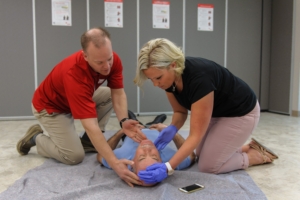
Navigating the Changes: What the New CSA Guidelines Mean for Occupational First Aid
As we gear up for significant updates in November 2024, it’s crucial to understand the upcoming changes to Occupational First Aid (OFA) regulations. These updates, aligned with the new Canadian Standards Association (CSA) guidelines, aim to enhance the quality and consistency of first aid training and equipment across workplaces in British Columbia. Let’s dive into what these changes mean and how they will impact both employers and employees.
Background
First aid services in the workplace are a fundamental responsibility for all employers. For nearly two decades, the requirements listed in Schedule 3-A of the Occupational Health and Safety (OHS) Regulation have seen minimal updates. However, recent advancements in first aid training and equipment, along with new CSA standards, necessitate a comprehensive update.
The key CSA standards influencing these changes are:
- CSA Z1210-17: First aid training for the workplace — Curriculum and quality management for training agencies.
- CSA Z1220-17: First aid kits for the workplace.
These standards provide national guidance on workplace first aid training programs and kits, ensuring they meet current best practices.
Key Amendments to the OHS Regulation
Determining First Aid Requirements
The amended OHS Regulation introduces a two-part duty for employers:
- Provide the minimum supplies, facilities, and first aid attendants required by Schedule 3-A.
- Conduct a written risk assessment in consultation with workers to determine any additional equipment, supplies, facilities, attendants, and services necessary to ensure injured workers can be promptly provided first aid and transported to medical treatment.
These changes emphasize a tailored approach to first aid, considering the unique needs of each workplace.
Classifying Workplaces
The updated Schedule 3-A now considers four characteristics when determining the minimum levels of first aid supplies, facilities, and attendants required:
- Number of workers.
- Hazard rating assigned to the industry.
- Whether the workplace is “remote” (more than 30 minutes from the nearest ambulance station).
- Whether the workplace is “less accessible” (cannot be safely accessed by ambulance or includes hazardous work areas).
This nuanced classification ensures that first aid provisions are appropriately scaled to the specific risks of the workplace.
Guidance on “Less-Accessible” Workplaces
“Less-accessible” workplaces are those that cannot be reached by an ambulance traveling by land or have hazardous areas inaccessible to ambulance personnel. Examples include areas at risk of avalanche, backcountry areas, and confined spaces.
Employers must develop rescue plans for workers in these areas and consider procedures to prevent access to such hazardous zones unless absolutely necessary. This proactive planning is vital to ensure worker safety in challenging environments.
Alignment with CSA Standards
Training Programs
Aligning with CSA Z1210-17 affects both the naming conventions and duration of first aid programs:
- Current OFA Level 1 will become Basic First Aid (1 day).
- Current OFA Level 2 will become Intermediate First Aid (2 days, reduced from 5 days).
- Current OFA Level 3 will become Advanced First Aid (10 days).
This alignment streamlines training durations while maintaining rigorous quality control standards, ensuring that first aid training is both efficient and comprehensive.
First Aid Kits
First aid kit requirements will now align with CSA Z1220-17:
- Personal Kit: CSA Z1220-17 Personal Kit.
- Level 1 First Aid Kit: CSA Z1220-17 Basic Kit (Medium), plus tourniquet and PPE.
- Level 2 First Aid Kit: CSA Z1220-17 Intermediate Kit (Medium), plus PPE.
- Level 3 First Aid Kit: CSA Z1220-17 Intermediate Kit (Medium), plus Oxygen Therapy Kit and PPE.
Employers are expected to update their kits as new supplies are purchased or existing supplies are replaced. Detailed kit content lists will be available in the spring of 2024.
Emergency Transportation
The amendments introduce more flexibility in emergency transportation types while setting performance-based requirements. Emergency transportation must now:
- Safely transport both a first aid attendant and the injured worker on a secured stretcher.
- Have effective communication means between the attendant and the operator.
- Be designed to protect injured workers from natural elements and dust, maintain normal body temperature, and allow adequate space for treatment.
If air transportation is necessary, employers must ensure appropriate aircraft availability and compatible stretchers.
Preparing for the Future
To support employers in implementing these new requirements, WorkSafeBC is developing guidelines and resources on topics such as conducting first aid assessments, defining “less-accessible” workplaces, and determining the required contents for first aid kits.
Important Dates
- Early 2024: Additional guidance and detailed equipment lists.
- Spring 2024: Draft guidelines for public review.
- June 2024: CSA-aligned training curriculum available.
- November 1, 2024: Effective date of OHS Regulation amendments.
As we approach these dates, it’s crucial for employers to stay informed and prepared. By aligning with CSA standards, these updates promise to elevate the standard of first aid training and equipment, ensuring a safer and more prepared workplace.
For more information on these changes and to access detailed resources, visit WorkSafeBC’s first aid requirements page.
Stay proactive and ensure your workplace is ready for these significant updates, paving the way for a safer, more efficient, and compliant future.


